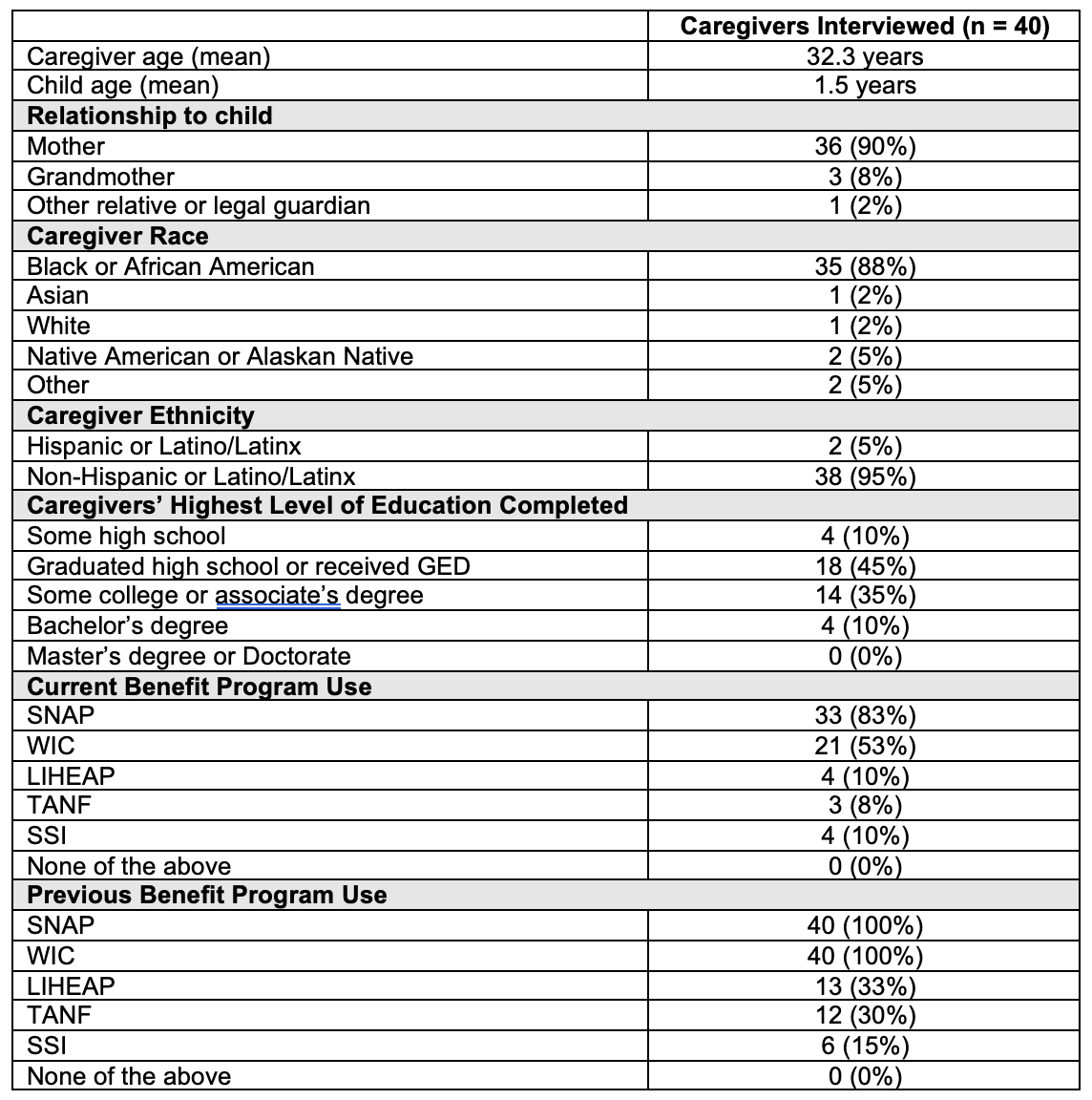Health Equity/Social Determinants of Health
Health Equity/Social Determinants of Health 6
655 - Caregiver Perspectives on Pediatric Primary Care Clinic-Based Nutrition Assistance
Publication Number: 655.317

Aditi Vasan, MD, MSHP (she/her/hers)
Instructor of Pediatrics
Children's Hospital of Philadelphia
Philadelphia, Pennsylvania, United States
Presenting Author(s)
Background:
The American Academy of Pediatrics recommends that pediatric primary care providers routinely screen families for household food insecurity. Some primary care clinics have responded by incorporating clinic-based nutrition assistance programs and referrals to community-based support. However, it remains unclear how to best connect families to nutrition resources that are aligned with their specific needs and preferences.
Objective: To explore pediatric caregiver perspectives on and preferences for clinic-based nutrition support, including clinic-based food banks and prepared meals, home food delivery, benefits enrollment support, and information about available community-based food resources.
Design/Methods: We conducted semi-structured interviews with caregivers of pediatric patients seen at two urban primary care clinics within a large academic health system. Caregivers whose children were Medicaid-insured and who reported current or previous use of government nutrition benefit programs were invited to participate. Interviews were recorded, transcribed, and coded by 2 independent coders using content analysis, resolving discrepancies by consensus. Interviews continued until thematic saturation was reached.
Results: We interviewed 40 caregivers of Medicaid-insured children, who were mostly mothers (90%) and were predominantly Black (88%). All caregivers had previous experience using WIC and SNAP, and 83% were current SNAP beneficiaries, while 53% were current WIC beneficiaries. We identified six primary themes. Caregivers felt (1) clinics were a comfortable and convenient environment in which to receive nutrition resources; (2) food resources should be offered as a routine part of all clinic visits; (3) clinic-based prepared meals can help meet families’ acute needs; (4) meal deliveries are a convenient source of support, particularly for families with barriers to transportation; (5) clinics should help families navigate burdensome WIC and SNAP enrollment processes; and (6) geographically-tailored information about food banks may help improve families’ awareness of community-based resources.
Conclusion(s): Pediatric primary care clinics represent a comfortable and convenient environment for families to receive food resources. Clinics should consider partnering with community-based organizations to provide different types of nutrition support, including prepared meals, meal deliveries, benefits enrollment assistance, and information about community-based food resources, to ensure they are able to meet families’ needs. 
.png)
